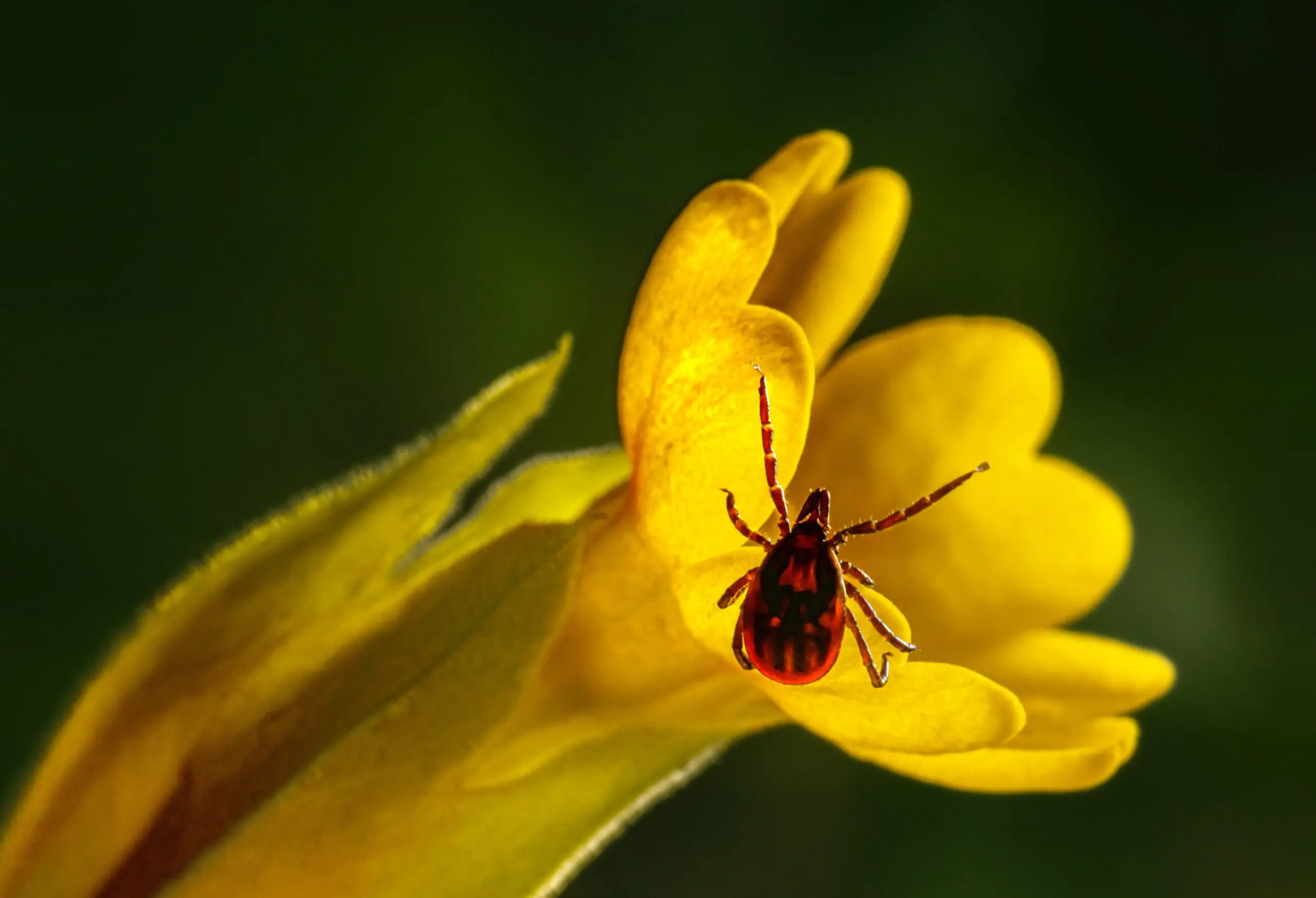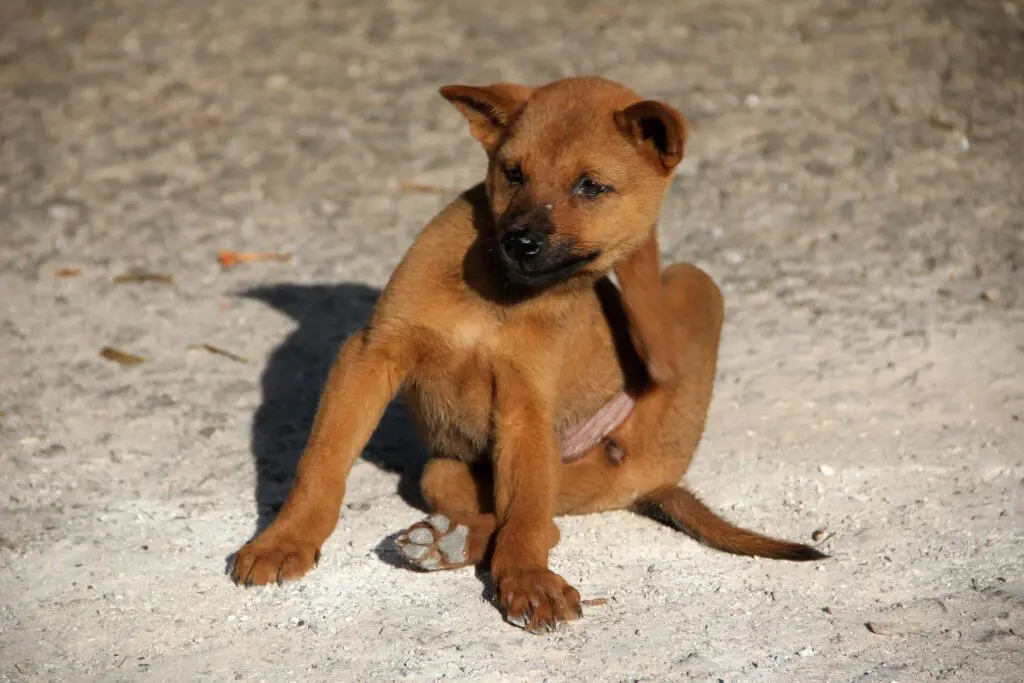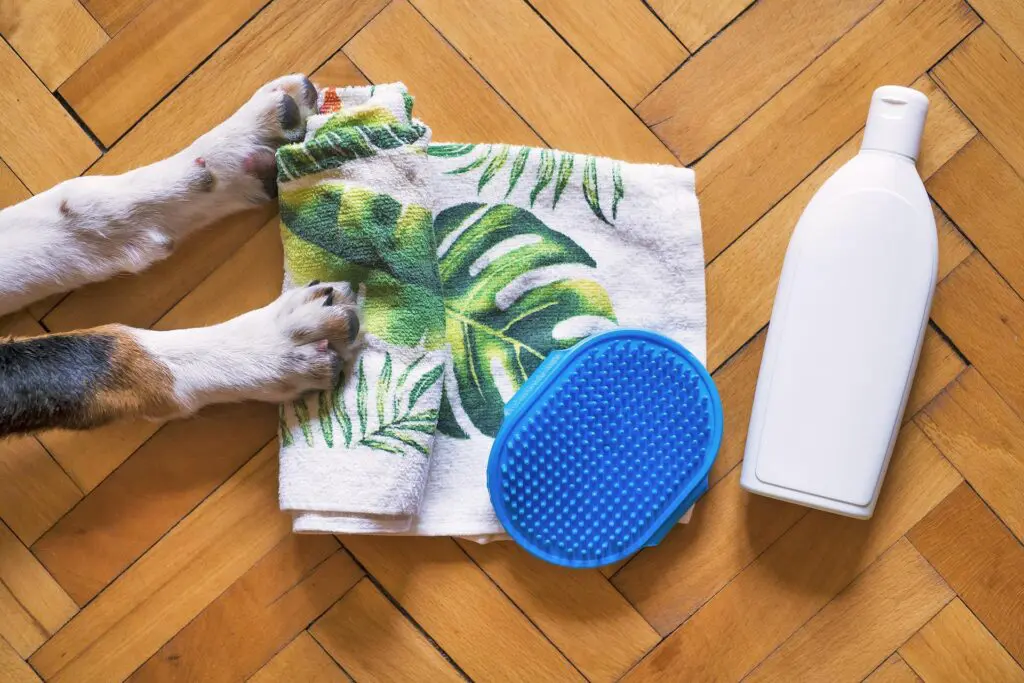

Flea season is right around the corner and as many pet owners know, fleas are extremely resilient pests. Not to worry though- flea season will be a breeze with this guide to flea prevention.
Flea Identification and Life Cycle
Fleas are tiny pests that usually grow to be around 2.5 mm in size. Their bodies are shiny and flat, and they are reddish-brown or black in color. They have spines around their heads and mouths. Their mouths are needle-like to allow for easy feeding. Fleas have tiny hairs all over their bodies, as well as 6 legs and a pair of antennae. They have no wings and cannot fly, but their legs are relatively long which allows them to jump far distances.
Fleas spend between 2 days and 2 weeks as eggs. Flea eggs are reminiscent of a grain of salt, though they are more oval in shape. Around 50% of an infested household’s flea population is made up of eggs. When environmental conditions are just right the eggs will hatch into larvae, which look like miniscule white worms with pale hairs. Larvae develop for roughly 5-20 days before spinning a cocoon and entering the pupa phase. Pupa cocoons are tiny and oval-shaped, but they are rarely seen since they live deep within carpeting. Fleas remain in this phase until environmental conditions are ideal for emerging. They may leave their cocoon after a matter of days but if necessary, their cocoon will protect them for months or even years. When they emerge as adults, they immediately start searching for a blood meal. Both male and female fleas need to consume blood in order to survive and to reproduce. Female fleas lay between 4 and 8 eggs after each meal. Fleas feed 10 to 15 times a day, so a single female can lay up to 50 eggs a day and as many as 2000 eggs in a lifetime. Fleas generally live for a few months but some live up to a year.
What Dangers Do Fleas Pose?
Fleas can be dangerous for a few reasons. First and foremost, fleas have the ability to spread a number of diseases and parasites. Some of the more common flea-borne diseases are murine typhus, tungiasis, tularemia, and bubonic plague. Fleas can also transmit tapeworm to both humans and pets. A flea infected with tapeworm larvae must be consumed in order for tapeworm to be contracted. For this reason, it is far more common for pets to get tapeworms than it is for humans. A pet infested with fleas will likely consume a few of the insects while grooming. Among humans, children have the highest likelihood of contracting tapeworms, especially if they tend to chew on their toys and blankets. Any cloth items may harbor fleas or their eggs.
In addition to carrying pathogens, fleas can cause an allergic reaction called flea allergy dermatitis, or FAD. The reaction, which can affect pets and people alike, causes intense itchiness and painful wounds on the skin. Even without FAD, too much itching can lead to wounds and secondary infections. What’s more, a serious infestation can cause a pet to become anemic, meaning their blood does not contain enough healthy red blood cells. Symptoms of anemia include fatigue or loss of energy, pale gums, faster heart rate, labored breathing, weight loss, loss of appetite, blood in the nose, and bloody stool or vomit.
Flea Habitat and Behavior
Outdoors, pets usually pick fleas up from shrubs, brush, high grass, debris and leaf piles, undergrowth, sand, wooded areas, or wild animals like chipmunks, rabbits, and foxes. Once they are on your pet, fleas gravitate to the neck, back, ears, and underside. Pets that have obtained fleas will bring them home. Fleas do not attach and their eggs are not sticky so they fall off of the host shortly after being laid. These traits, along with their outstanding jumping abilities, allow fleas to easily move from host to host or from host to surface. Fleas that have made it into a home or business will most commonly infest other pets, pet bedding, carpets, furniture, upholstery, cloth pet or children’s toys, cracks in the floor, and virtually anywhere else that is warm enough and close enough to a reliable food source.
Fleas prefer humid environments with temperatures between 65 and 80 degrees Fahrenheit. While they are outdoors, fleas are only active when the weather permits. In warmer states like Florida, fleas are active year round. In colder states like New Jersey, they are usually active from March to December with peak activity occurring during the summer and early fall. They either die or enter a dormant state during the winter. If fleas make their way indoors, they can be active year-round no matter what state they are in.

Signs of an Infestation
Here are some of the most noticeable indications of a flea infestation indoors:
Itchy or Sick Pets
Pets are usually the first indicator of a flea infestation. They typically become extremely itchy and somewhat agitated. They may experience fur loss due to FAD or excessive scratching. Pets may become sick from fleas as well. Keep an eye out for sluggish behavior, symptoms of anemia, and any other signs of illness.
Fleas
Adult fleas are usually fairly easy to spot, especially in an infested area. They can be seen hopping around on carpets, drapes, upholstered furniture, pet bedding, and pets. To inspect your pet for fleas, part their fur with a comb so you can see their skin. If you spy any fleas, there is a good chance that an infestation has already started.
Flea Dirt
Fleas, like all pests, leave droppings everywhere they go. Flea droppings are called flea dirt and they look like small, reddish-brown specks. Flea dirt can be found on your pet’s skin or on the surfaces they touch, like their bedding or the floor. You may also find flea dirt on your hands or under your fingernails after petting your furry friends. If you are unsure whether or not you’re seeing flea dirt, put some of the specks on a white paper towel or tissue and add a drop of water. If the specks run red, they are flea dirt. Flea droppings are rich in hemoglobin from the blood fleas consume, so flea dirt is essentially digested blood matter- hence the reddish hue. It is uncommon to see flea larvae, but if you do it will probably be near these droppings, as flea dirt is their main source of food.

Flea Bites
Your pets are not the only hosts fleas are interested in. In an infested area, fleas will often bite humans around the feet, ankles, and calves. Flea bites look like small discolored bumps on the skin. They may appear in clusters or a line, and a small ring or halo may form around a bite.
Pro Tips for Flea Prevention
- Keep your pets flea-free
It is a good idea to put a flea collar on your pet or treat them regularly with flea prevention medicine, spray, or shampoo. Speak with a veterinarian to decide which method is best for your pet. If you prefer not to use a flea preventative on your pets, bathe them or brush them with a flea comb often. Baths and combing are great methods to use in addition to preventatives, but be sure not to wash away any recently-applied sprays or medicines. Outdoor pets are especially susceptible to getting fleas, but indoor pets are far from immune; people often carry fleas from the outdoors to their indoor pets. It is important to practice flea prevention on all pets, no matter where they spend their days.
- Vacuum
Vacuuming is the best way to remove fleas from an area. Vacuum at least weekly to prevent an infestation, and vacuum more often during an infestation. Fleas don’t tend to stay in high-traffic areas, so vacuum hard-to-reach areas as well as open spaces. Be sure to vacuum carpets, upholstery, drapes, underneath furniture, near baseboards, and anywhere your pets like to lay (including in the car). After vacuuming, dispose of the vacuum’s contents in a sealed plastic bag and place it in an outdoor garbage can. Pet bedding should also be washed regularly. After an infestation, you may want to give your carpets a deep clean. Vacuuming gets rid of most of the bugs, but some fleas make their way deep into the carpet and can survive for quite a while. If they are not taken care of, they may lead to a future infestation.
- Make your yard undesirable to fleas
Eliminate as many flea habitats as possible. Keep grass cut short and trim shrubs and bushes. Remove debris and leaf piles as well. Discourage small wildlife like rodents, raccoons, and opossums from entering your yard. For information on preventing these types of pests, visit our resources page or find information about specific pests here.
Fleas can become a problem extremely quickly and should be taken care of right away. Ask us about our outdoor protection plans- we’ll help you build the plan that’s right for you.
If you need help, give us a call for comprehensive flea pest control.





